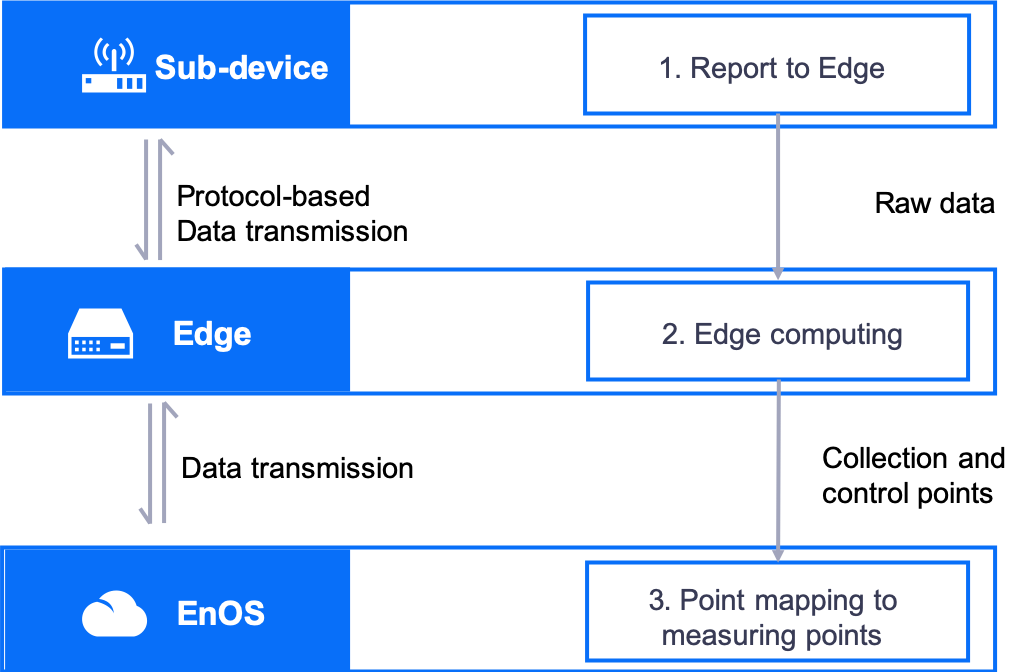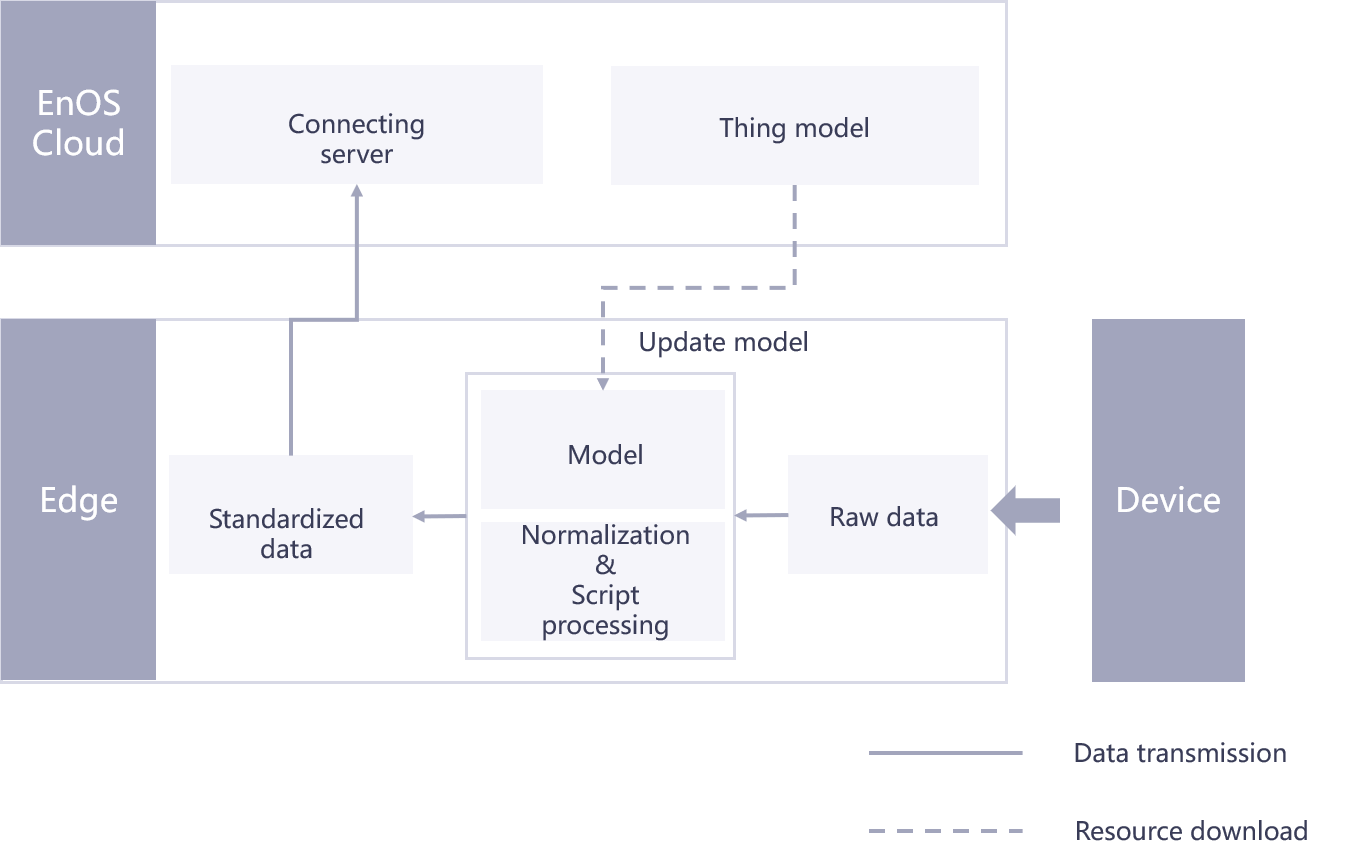Data Collection and Processing¶
As illustrated in the figure below, a sub-device communicates with EnOS Edge over a protocol, where Edge uploads the specified collection point and control point information to EnOS according to the template specified in the protocol program.
EnOS will then directly map the collection points or process the collection points with scripts before mapping to the measurement points defined in the models.

Connecting with EnOS via Protocols¶
The data collection capability of the Edge is based on a variety of communication protocols. The protocol library of EnOS Edge includes not only a large number of industry standard communication protocols but also various proprietary communication protocols. For a list of protocols supported by EnOS, see EnOS Edge Protocol List.
Data Collection¶
Based on the device protocol library, EnOS Edge can quickly connect industrial devices and complete data collection. The sub-devices supported by Edge include, but are not limited to, the following list.
Field/Industry/Device |
Type |
Remarks |
|---|---|---|
Photovoltaic |
Inverter |
Device |
Junction box |
Device |
– |
Weather station |
Device |
– |
Electricity meter |
Device |
– |
Centralized power station monitoring system |
Third-party system |
– |
Substation comprehensive automation system |
Device |
– |
Wind energy |
Wind turbine |
Device |
Box transformer |
Device |
– |
Anemometer tower |
Device |
– |
Substation comprehensive automation system |
Third-party system |
– |
Industrial park/building |
Power meter |
Device |
Charging pole |
Device |
– |
Power distribution management system |
Third-party system |
– |
Energy storage battery PCS |
Device |
– |
Traditional power (thermal power, hydropower, gas-fired power, etc.) |
DCS/comprehensive automation backend systems |
Third-party system |
Data Timestamping¶
To support the data processing logic of applications in the cloud, Edge not only tags collected data with the latest timestamp but also retains the earlier timestamp of when the sub-device data came in. The sub-device data is processed according to the following rules.
The raw data time is saved as an attribute of a data entry and uploaded to the cloud.
Edge timestamps a data entry in coordinated universal time (UTC).
Edge converts earlier timestamps created with different protocols into a uniform format. If the earlier timestamp sent by a certain device is UTC+8, it can be converted to UTC+0.
Data Mapping¶
In addition to data collection, another core function of Edge is to map the collected data to the measurement points based on the model definition and the data mapping template.

Users can use the following methods to map data to the measurement points defined in a model.
One-one mapping: The value of a collection point is mapped to a measurement point of a model without any processing.
Formula mapping: Process a collection point with a formula and then map it to a measurement point.
EnOS has a set of formulas pre-defined for users. For more information, see Point Mapping Formulas.
Note
You can only use one-one mapping for a control point.
One measurement point can be mapped to a collection point and a control point at the same time.
Edge Computing¶
In some cases, you might need to perform aggregation calculation upon the measurement point data and store it for further analysis, or you might need to further process the data to obtain the device state data. This is when you need the edge computing service.
For more information, see Edge Computing.